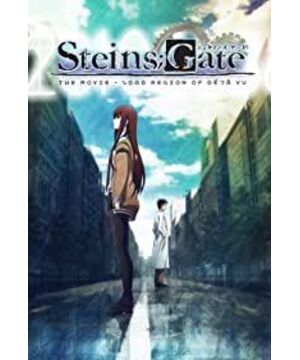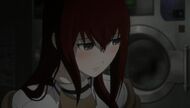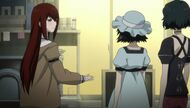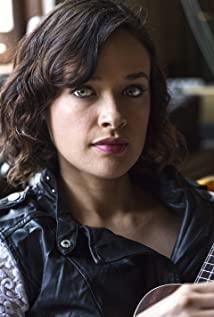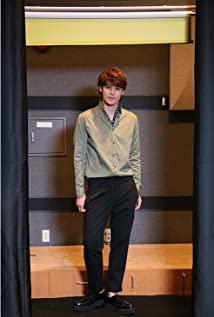After reading it carefully and thinking about it, I found that it actually did not violate the "world line" theory. The theater version is still a "single world" rather than a "parallel world". The reasons are as follows:
1. The current world is running on the STEINS; GATE world line, but the original α and β world lines have not disappeared, but continue to exist as possible world lines (the original words in the game). The TV version of Nakabe's ability to return from the α line to the β line can also be clearly proved.
2. Therefore, there is no contradiction between the existence of the R world line and the SG world line at the same time, because they are not running at the same time (just like each heroine in Galgame is a world line, and the option plots in each female main line, Branch to the world line). The world is still stuck on the SG world line. It's just that after a certain time on the SG world line, Okabe no longer exists on the world line, and he was forced to move to the R world line (only Okabe moved, the world line did not move, so I don’t know if it is understood). The assistant is here as an observer. So far, it is the SG world line. Okabe does not exist on the SG line, but if you jump to the R world line, you can see the existence of Okabe.
3. What kind of world the R world line is, I am puzzled about this. Like a world where only Okabe is alone, perhaps the R world line is the "privilege" of being an observer? The full picture of the R world line is not shown in the theater version. What is certain is that in the entire theater version, the world line has not moved, and it has always been on the SG world line. This is certain. And there is no simultaneous operation with two worlds.
After playing the game, I discovered an interesting problem. The foreshadowing of the theater version has long existed in the game. When the evil spirits repeatedly cycled but could not save the destiny of real reason and went to help his assistant, the assistant said the harm of repeated time jumps: maybe it will break away from the loop of time, that is, from the law of causation. The so-called detachment of the law of causality refers to "wandering forever in the closed loop of time, never growing, that day will never end, the worst case is classified as nothingness. The disappearance of existence, you are 18 or 19 years old The traces of life will be completely erased. Everyone will forget that Okabe once existed." It seems that this is what happened to Okabe in the theater version. The R line is likely to be a closed space out of the law of causality.
4. If you insist that it is a parallel world, you can assume that the theater version is a parallel world. According to the "parallel world" theory, there is an Okabe in the R world line, including other people: Toko, Mayuri, assistants, etc. exist. So if Okabe on the SG world line is forced to move to the R world line, wouldn’t there be two Okabe on the R world line? So I think that the theory of "parallel worlds" does not hold true in this movie.
5. There is also a conjecture about Loli's assistant. Some people think that the assistant had met Okabe when he was a child, and then I remembered it later. The following are some of my personal opinions: I
carefully figured out what the assistant said before going to the bench: "I haven't conveyed my feelings to him yet. Meetings are always brave and quarreling... , I plan to solve everything by myself... But, in fact, I really hope someone can come and talk, I want someone to say [Even if other people don’t care about you, I will pay attention to you] "At this time , Has the assistant substituted herself into the childhood scene? At this time, Ookabe came here, sat next to his assistant and started talking? Because it is said that the migrant workers are going to help hold the assistant, the theater version did not clearly state it. If it is really discussed, I think there is no need to deliberately conceal it in the animation, right? Before the assistant came to the bench, he was in a very confused state, so maybe he didn't sit on the bench with a purpose? So I feel that it is contradictory to say that it was accidental, because if I saw it when I was a child, then at this time, the little assistant should also come to this place. So I think that this local assistant turned into a loli just to render the scene when the assistant was substituted into a child.
The above is just my personal opinion, I hope everyone can answer and discuss together. Some people should not easily deny [Stone Gate] because of their own misunderstandings (although I don't necessarily have a misunderstanding). After all, the original theatrical version is still the company that produced the pseudo-science trilogy, not the original animation company itself, so I think the original author will at least not make such a low-level logical error that contradicts the past setting. Moreover, the theater version itself is a fan-oriented work. Judging from the final box office, it should be much more than expected. I dare not say that the theater version is as exciting as the TV version, but at least its settings and logic are still very rigorous. In my opinion, this theatrical version has lived up to my expectations and is a sequel worthy of the TV version!
PS: Strongly recommend friends who like [Stone Gate] to play games! awesome! It is also very good as a supplement to the TV version. The theoretical setting is too detailed, which is far better than the TM Physics class. XD
View more about Steins;Gate: The Movie - Load Region of Déjà Vu reviews


